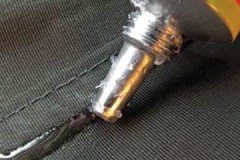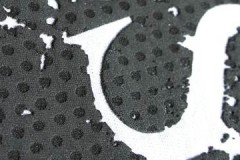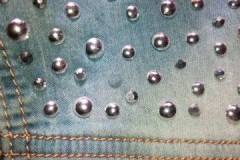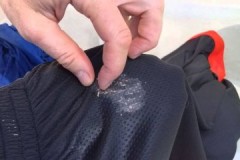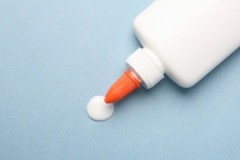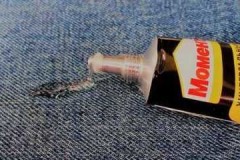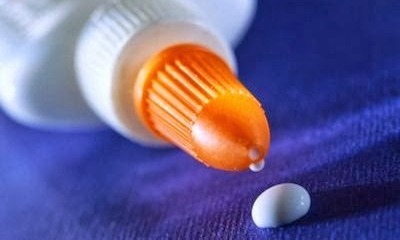 One awkward movement of the hand, and a hard-to-remove glue stain appears on the outerwear. It is possible to cope with it, but this will require knowledge, without which there is a high risk of tissue damage.
One awkward movement of the hand, and a hard-to-remove glue stain appears on the outerwear. It is possible to cope with it, but this will require knowledge, without which there is a high risk of tissue damage.
How fast and safe remove the glue (stationery, hot glue, for mice, silicone, etc.) from clothes at home, read the article.
Content
How can you remove glue stains at home?
General purpose solvents are formulations that help get rid of all types of adhesives, regardless of their origin. They must be used carefully, since their base is represented by caustic substances.
The product has a gel consistency, due to which it does not spread over the surface of the fabric and does not stain clothes.
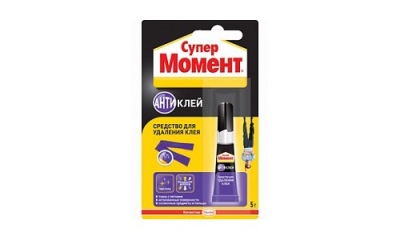 Mode of application:
Mode of application:
- Place a paper towel under the back of the stained item.
- Apply the composition to the stain.
- Cover it on top with another napkin and leave overnight.
- Remove napkins, wash things.
Other universal formulations include:
- Acetone. The substance has a pungent odor, so it should only be used in well ventilated areas. In order not to damage the fabric, first the product is tested in an inconspicuous area. A cotton pad is moistened with acetone, with which the stain is treated. You cannot leave it on the fabric for a long time.
- Nail polish remover... It contains acetone, but in a lower concentration, so when removing traces of persistent glue, it can be left on things for 10-15 minutes. Remove dirt with a stiff brush, such as the back of a sponge.
- Petrol. It has a fatty base and a pungent odor. Therefore, it is recommended to use it outdoors. The composition is applied to gauze, folded in several layers, with which stains on clothes are systematically worked out.
- Dimexide. This is a pharmacy solution that is used for medicinal purposes. A 99% concentrate is required to remove sticky marks. To remove fresh stains, it is enough to apply Dimexide on a napkin.It is rubbed with dirt until it disappears completely. If the glue has dried, make a lotion, keeping the solution on the fabric for no longer than 5-15 minutes.
How to wipe off different types of adhesives?
The composition of the adhesive is critical when choosing a remover. For example, you can get rid of traces of PVA by simply rubbing the thing, and to remove Superglue you will need to resort to "heavy artillery".
How to remove PVA?
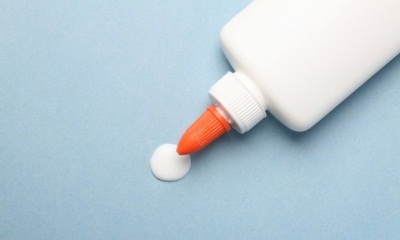 Glue PVA leaves white spots on fabric... The composition is water-soluble, so no corrosive substances are required to remove it.
Glue PVA leaves white spots on fabric... The composition is water-soluble, so no corrosive substances are required to remove it.
If glue has recently come into contact with the garment, it is simply turned inside out and placed under running hot water.
After a minute, it should be completely washed out of the fibers of the fabric. If a trace remains, the thing is additionally washed with soap or powder.
You can use rubbing alcohol to remove dried stains.... After processing, the item is washed by hand or in a typewriter. Read more here.
Super glue
Superglue is highly durable. When it hits any surface, it hardens very quickly, remaining on it in the form of a hard crust. It cannot be removed mechanically or by normal washing. You will need the help of special solvents.
The composition is safe for fabric, but you need to work with it with gloves... How to use this versatile solvent has been described above. Read more here.
Hot melt glue (hot, for glue gun)
Thermoplastic glue is a substance that becomes liquid and sticky when heated. When cooled, it hardens. However, you will not be able to use this feature of hot melt glue to remove it from things, since you cannot heat the fabric to a high temperature.
It is recommended to use isopropyl alcohol to remove hot glue from clothing. It removes stains quickly and safely from any fabric.
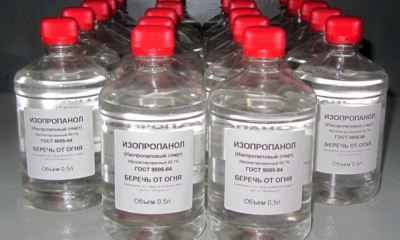 Mode of application:
Mode of application:
- Apply alcohol on folded gauze.
- Place it on the stain and press down slightly.
- Leave the compress for 5-10 minutes.
- Remove the softened substance from clothing with the same gauze.
- To wash the thing.
The freezing method for removing hot glue is not effective. On cooling, it bursts, but does not move away from the fabric. Therefore, it can only be cleaned off with caustic substances.
If isopropyl alcohol is not on hand,you can use the following types of solvents:
- gasoline "Galosha";
- White Spirit;
- regular gasoline;
- acetone;
- solvent 647.
Clerical
Stationery glue is designed for gluing paper and cardboard. Most often, women whose children go to kindergarten and elementary school encounter stains from its use.
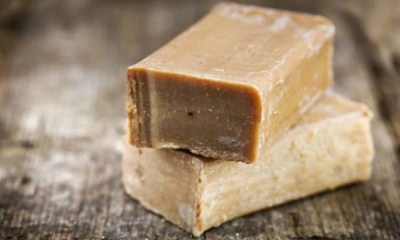 To get rid of frozen marks, use regular laundry soap.
To get rid of frozen marks, use regular laundry soap.
Mode of application:
- Wet the whole thing, or moisten only the soiled area.
- Lather the stain with laundry soap.
- Leave to soak for 30 minutes.
- Wash in warm water.
- If the stain does not give way, you can use a brush.
Titanium
Tatan is used during construction work. It adheres firmly to almost any surface, is resistant to temperature extremes, to mechanical stress and UV radiation, and is not afraid of water. Therefore, it is very difficult to remove it from clothing.
To cope with the problem, you need to do the following:
- Spread the product on the floor.
- Cover the stain with a cloth or heavy paper towel.
- Tap the dirty surface with a hammer.
- Lift the napkin, remove the loose pieces of glue.
- The procedure is repeated until the glue stops coming off the clothes. Residues are removed with a solvent.
Silicate
Silicate glue is often referred to as "liquid glass". This is an aggressive line-up that is difficult to handle. Therefore, when working with silicates, you need to take care of the protection of clothing in advance. If the trouble does happen, you can use an aqueous solution based on soda and washing powder.
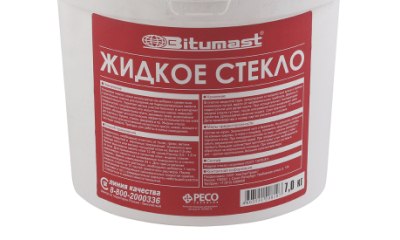 Procedure:
Procedure:
- Dissolve 50 g of washing powder and soda in 2 liters of warm water.
- Soak the whole thing in the resulting composition. The exposure time is 3 hours.
- Rub the dirty area with a hard-bristled brush.
To enhance the effect, you can add a little dishwashing liquid to the composition.
If it is not possible to soak the whole thing as a whole, then you need to prepare a gruel from ½ teaspoon of soda and washing powder, which are dissolved in a small amount of warm water (1-2 tablespoons are enough). The composition is applied to the stain, left for 1-2 hours, after which the item is washed in the usual way.
Liquid Nails
Liquid nails are a special type of construction adhesive based on synthetic rubber and polymers.
Procedure:
- Apply the composition to a cotton pad.
- Apply it to the stain like a compress. From above, you can press cotton wool against the fabric to enhance the effect.
- Remove the compress after 10 minutes.
- With a new disc soaked in acetone, wipe the contaminated area until completely clean.
- Wash clothes in warm water.
You need to move in the direction from the edge of the spot to its center.
Wallpaper
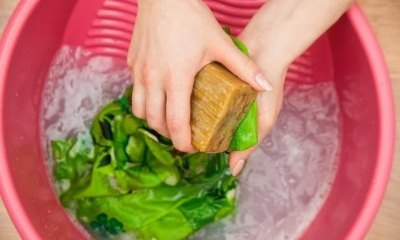 Wallpaper glue dissolves well in water. To remove it, proceed as follows:
Wallpaper glue dissolves well in water. To remove it, proceed as follows:
- Include hot water.
- The thing is turned over to the wrong side and brought under the stream.
- After a minute, rub the stain with your hands.
- If it is not possible to cope with it, they use laundry soap. They rub the stained area with it, leave it to soak for 1-2 hours, and then wash it as usual.
Soap can be replaced with washing powder or dishwashing detergent.
Silicone
The sooner you start removing silicone from your clothing, the better. Cured sealant is more difficult to handle. If the stain is fresh, it can be easily washed off with warm water.
Dry silicone is treated as follows:
- Wrap the clothes in a plastic bag.
- Put the thing in the freezer.
- Leave to act for an hour.
- They remove the thing from the freezer and use any sharp object to remove the film from the surface.
If a greasy residue remains after removing the silicone, wash is required.
For rhinestones
The glue remaining on things from rhinestones is striking. It is not always possible to get rid of it with the help of a regular wash.
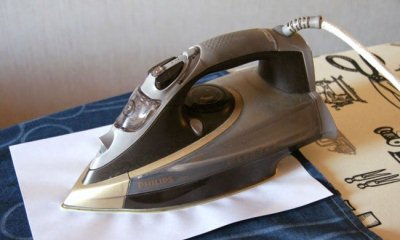 To remove the stain, proceed as follows:
To remove the stain, proceed as follows:
- Heat the iron to the maximum temperature.
- Spread the item on the ironing board.
- Cover the stain with a paper towel.
- Draw it with an iron.
- Remove the towel along with the glue that has passed onto it.
If the fabric is delicate and cannot be overheated, you can use acetone or nail polish remover. Read more here.
Mouse
Mouse glue is used in traps that are set up for rodents. If it gets on your clothes, you can remove it with vegetable oil.
Procedure:
- Apply oil to a cloth.
- Leave to act for 10 minutes.
- Scrape off the substance with a knife. If it is poorly removed, the procedure is repeated.
- After processing, the fabric is washed in warm water.
In addition to vegetable oil, you can use gasoline or kerosene.
How to clean the sticker marks?
Sticky marks from stickers can be removed using any substance that has a fat base... The most commonly used oil is olive or sunflower oil. It is applied to the fabric for an hour, after which the remaining trace is wiped with a cotton pad.
If you are concerned that a greasy stain will remain on your clothes, you can use nail polish remover. It removes sticky stains from labels and price tags well. After such treatment, the product must be rinsed in cool water to get rid of the smell.
For more information on how to remove a sticker from clothing, see here, remove traces of glue from it - here.
Helpful information
Tips that come in handy when removing glue from clothing:
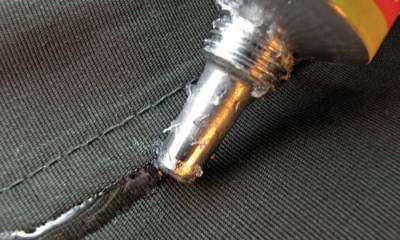 You need to start removing the stain immediately. While the glue is fresh, it is not difficult to deal with it with the help of non-aggressive compounds. When it dries, the likelihood of damaging the fabric increases.
You need to start removing the stain immediately. While the glue is fresh, it is not difficult to deal with it with the help of non-aggressive compounds. When it dries, the likelihood of damaging the fabric increases.- When removing a stain, consider not only the type of adhesive, but also the type of fabric. The more delicate it is, the more gentle the solvent should be.
- If after the procedure there are traces on things, then you can start re-cleaning only when the fabric is dry. Aggressive substances can damage clothing.
- After processing with any solvent, the thing must be washed to remove the remnants of glue and cleaning agent.
For information on how to remove various glue from jeans, read this article.
Conclusion
Removing the glue from clothing is not difficult. Each formulation has its own effective solvents that make it easy to remove even stubborn stains. It must be taken into account that the stronger the adhesive, the more aggressive the substance must be to remove it.
